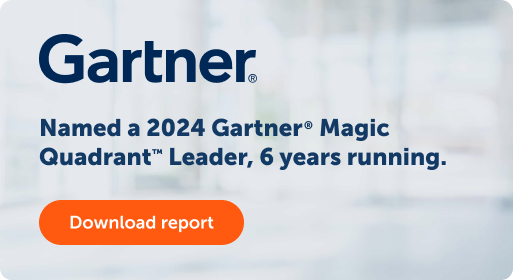- Products
Automate any process, anywhere Streamline complex, mission-critical workflows with the Agentic Process Automation System. Explore the Platform Explore the Platform
- AI System
- Build AI Agents
Automate advanced tasks with AI Agent Studio.
- Streamline workflows
Rapidly design and deploy with Automator AI.
- Process complex documents
Extract and organize data with Document Automation.
- Discover opportunities
Identify inefficiencies with Process Discovery.
- Orchestrate automations
Centralize initiatives with Automation Workspace.
- Build AI Agents
- Automation System
- Govern programs
Establish frameworks and oversight with CoE Manager.
- Automate from any app
Get AI-powered assistance with Automation Co-Pilot.
- Speed workflows with cloud
Power instant data exchange with serverless Automation Anywhere Cloud Service
- Unify systems
Connect applications and workflows with seamless integrations.
- Govern programs
- View all Products
-
- Solutions
Featured Solutions
 Google Cloud Google Cloud and Automation Anywhere empower enterprises to fast-track their AI + Automation journey. Google Cloud
Google Cloud Google Cloud and Automation Anywhere empower enterprises to fast-track their AI + Automation journey. Google Cloud Amazon Web Services Streamline workflows, reduce costs, and make automating even easier when you combine the Agentic Process Automation System with AWS Amazon Web Services
Amazon Web Services Streamline workflows, reduce costs, and make automating even easier when you combine the Agentic Process Automation System with AWS Amazon Web Services- By Industry
- By Function
- By Technology
- View all AI Solutions
-
- Resources
Get Community Edition: Start automating instantly with FREE access to full-featured automation with Cloud Community Edition.
Featured
 Named a 2024 Gartner® Magic Quadrant™ Leader for Automation. Celebrating Six Years of Recognition as a Leader. Download report Download report
Named a 2024 Gartner® Magic Quadrant™ Leader for Automation. Celebrating Six Years of Recognition as a Leader. Download report Download report - Customers
New & improved certifications
 Give yourself a competitive advantage with Automation Anywhere's industry-recognized certifications.Explore Certifications Explore Certifications
Give yourself a competitive advantage with Automation Anywhere's industry-recognized certifications.Explore Certifications Explore Certifications - Company
Get in touch with us Get help, know more, learn, ask questions, or just say Hi! Contact Us Contact Us
- Get To Know Us
- Announcements
- Society
-
Blog
How to Show the Maximum Value of Your Automation Program

The Automation Anywhere Pathfinder Program is your fast track to automation success. Take advantage of the program that includes self-paced learning, peer and partner expertise, community engagement, and product innovations that empower you to run agile, scalable enterprise-wide automation programs. This blog article is part of a series that gives you a taste of the information and advice available through the Pathfinder Program. To learn more, visit our Pathfinder web pages.
When your automation program is up and humming, it’s undoubtedly providing value to your organization. But to understand just how far that value stretches, you must ask the right questions to unfurl the more substantial, perhaps unquantifiable, metrics that are giving your program clout. And the best questions to ask—and answer with metrics—will likely shift based on the phase you’re in: start, accelerate, or scale.
The metrics you track and the narrative behind your numbers can be one of the most powerful tools in your automation program tool belt. It can have dramatic impact on your automation program, including whether or not you achieve:
- Buy-in and funding from leadership
- Cross-team evangelism efforts for business leadership
- Justification for additional automation efforts
- ROI projections
Bot value > bot volume, every time
There’s a general cadence you can follow as you measure performance and progress your automation program forward.
- In the start phase, you’ll want to lay the groundwork to track basic metrics
- As you accelerate, you’ll have the data to track hard, tangible metrics as well
- As you scale, you’ll be able to track all of the above plus those more intangible, “soft metrics“ that can be just as, or even more, powerful in demonstrating the impact of automation
CONFESSIONS OF AN AUTOMATION LEADER:
Note that none of what we’re suggesting you track here hinges on the number of bots running. That’s because a lot of bots can have a valuable impact—but one bot automating 20 processes could be driving a much higher cost or time savings than 10 bots automating 10 processes. This was the case for one Automation Anywhere community member, who explained to their user group that in their efforts to track the impact of automations, they initially got it wrong. This customer was focusing on the number of automations deployed and quickly realized that this metric didn’t tell their C-suite anything about the impact automation was having. You and your stakeholders want to understand the value your overall automation program is providing, and you may be overlooking powerful data points that prove valuable business impact if you are only focused on number of bots.
Metrics to capture when you’re starting
If you’re in the start phase of your automation program, you can keep the metrics you report out simple. But DO start sharing this insight into performance. This is something you’ll build on as you go. Reporting in the beginning can be as easy as tracking the number of bot executions for a given automation and multiplying that by expected savings per run. Here’s how that plays out:
- Bot A is designed to run 52 times over the next year and should save $52,000
- Bot A actually ran 50 times over the year, so Bot A saved $50,000
That’s a great place to start when you are in the start phase.
Share the tangible benefits realized as you accelerate
Hard metrics are incredibly valuable. As you experience them, bake them into your talk track and highlight them in the narrative you share about your automation program. This is the best way to open people’s eyes to the power of an automation program and help them start seeing that it is driving a lot of value. Think along the lines of:
- Hours saved
- Money saved
- Number of bot runs (baseline for future)
- % of employees enabled by/accessing automation
CONFESSIONS OF AN AUTOMATION LEADER:
One of our community members, a global clothing retailer, was looking to achieve hard cost savings. They invested in automation to reduce duplicate deliveries that were happening with some of their wholesale accounts. This automation saved them 25% in hard costs month-over-month by reducing the expenses associated with the return freight, labor, product restocking, etc. Once you’re proficient at sharing out hard metrics like these, it’s time to move to soft savings. .
Think soft savings as you scale
Soft savings are benefits your organization is experiencing that aren’t necessarily tangible but are important enough to acknowledge. They can be:
- Improved employee morale due to employees being more focused on bigger tasks
- Increased customer satisfaction due to employees having more time to dedicate to customer conversations
CONFESSIONS OF AN AUTOMATION LEADER:
Another community member in the finance sector shared some “soft metrics” that they experienced around morale. Every quarter close, this company entered into a punishing round of processes for employees. When the company looked at resignations—they saw a pattern: the highest number of people quitting came before and after quarter close, which, prior to automation, entailed working around the clock.
Once quarter close was significantly automated, morale increased, employee satisfaction scores went up and, ultimately, the organization experienced lower attrition. Again, this is a soft metric but remarkable (and one any company would value) nonetheless. So, while there isn’t necessarily a tangible cost savings in these instances—and the number of bots running (again) is not a factor—there is a highly impactful, albeit intangible, value to your automations at this stage.
Know your MVP
So, you’ve asked good questions and developed metrics to answer them. There’s still another step to a successful value metrics narrative: This involves knowing your “MVPs,” your Most Valuable Processes. These are the automations that stand out as the transformative pillars of your entire automation program.
CONFESSIONS OF AUTOMATION LEADERS:
A retail customer of ours expressed the major market impact caused by the lead times when releasing a new product. From ideation to final delivery, their speed to market was simply just not that—incredibly slow. All the while, their competitor was able to bring new products to market in half the time.
The automation process put into place cut their lead times by more than half and created a huge market opportunity for them. And while speed to market is not necessarily measurable in a granular metric, its macro value on market leadership and brand differentiation was crystal clear across the executive team. That’s their MVP.
In another customer scenario, a global financial customer found themselves out of compliance with regulatory reporting. Every week that they remained out of compliance, they incurred significant fines. They turned to automation to reconcile their compliance issues and save them from facing egregious fines moving forward. Is there a granular metric that can be attached to staying compliant? Maybe not. But this automation process is their MVP because it contributed huge value to their bottom line. An MVP may be something intangible but so substantial that its tangible or hypothetical monetary value is understood. It could be anything that makes your organization’s systems more secure or more compliant, or it could be something that generates a tremendous opportunity cost.
The final word
You can ensure that your automation program is on track by asking the right questions and evolving the metrics from your answers as you go. Remember to start simply, record hard costs, and then add in the value of soft costs. It’s a formula our community has seen succeed time and time again. You will, too.
Learn more about our Pathfinder Program for Your Success.
About Automation Anywhere Staff
Get to know the Agentic Process Automation System.

For Students & Developers
Start automating instantly with FREE access to full-featured automation with Cloud Community Edition.



